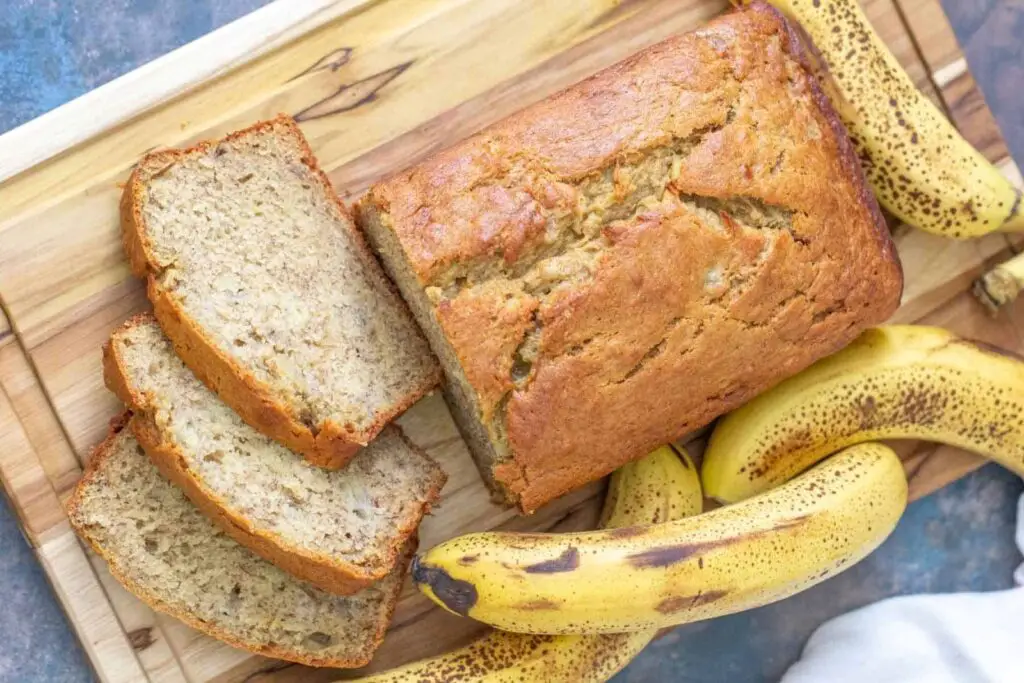
Chicken meatballs are a flavorful and versatile alternative to traditional beef or pork meatballs. Made from ground chicken, these bite-sized morsels are seasoned with herbs, spices, and other ingredients to create a delightful combination of flavors. Whether served as an appetizer, added to pasta dishes, or used as a topping for pizzas, chicken meatballs offer a lighter and healthier option for meatball lovers. However, if you find yourself with a surplus of chicken meatballs or want to prepare them in advance for quick and convenient meals, freezing is an excellent option. Freezing chicken meatballs allows you to preserve their taste and texture, ensuring that you can enjoy these delectable bites whenever you desire. In this guide, we’ll explore the best methods for freezing chicken meatballs, from preparation to storage, so you can have a supply of ready-to-cook meatballs on hand whenever you need them. Join us as we dive into the world of freezing chicken meatballs and discover the convenience of having these flavorful gems at your fingertips.
Here are the simple steps to freeze chicken meatballs:
- Step 1: Prepare Fresh Chicken Meatballs
- Step 2: Allow the Meatballs to Cool
- Step 3: Arrange the Meatballs on a Baking Sheet
- Step 4: Place the Baking Sheet in the Freezer
- Step 5: Transfer to Freezer-Safe Containers
- Step 6: Seal the Containers or Bags
- Step 7: Label and Date the Packages
- Step 8: Store in the Freezer
Step 1: Prepare Fresh Chicken Meatballs
When it comes to freezing chicken meatballs, it’s important to start with freshly prepared ones. Begin by following your favorite chicken meatball recipe, whether it includes a combination of ground chicken, breadcrumbs, herbs, spices, or any other ingredients that suit your taste. Take care to ensure that the meatballs are cooked thoroughly before proceeding with the freezing process.
Cooking the chicken meatballs thoroughly is essential for several reasons. First, it ensures that the meatballs are safe to eat by eliminating any harmful bacteria or pathogens that may be present. Proper cooking also enhances the flavor and texture of the meatballs, resulting in a more enjoyable eating experience. Additionally, fully cooked meatballs freeze better as they have a reduced risk of developing off flavors or textures during the freezing and thawing process.
To cook the meatballs, you can choose from various methods such as baking, pan-frying, or even simmering them in sauce. Follow the instructions provided in your recipe, making sure to cook them until they reach the appropriate internal temperature. The recommended internal temperature for cooked chicken meatballs is 165°F (74°C), which ensures that they are cooked all the way through and safe to consume.
Step 2: Allow the Meatballs to Cool
After cooking the chicken meatballs, it’s crucial to let them cool completely before freezing. This step is important to prevent condensation and ice crystals from forming on the surface of the meatballs, which can degrade their quality and texture during the freezing process.
When hot or warm food is placed directly into the freezer, the temperature difference between the food and the freezer can cause moisture in the air to condense on the surface of the food. This moisture can form ice crystals, leading to freezer burn and negatively impacting the taste and texture of the meatballs.
By allowing the chicken meatballs to cool at room temperature, you give them time to release excess heat and minimize the temperature difference between the meatballs and the surrounding air. This gradual cooling process helps to reduce the likelihood of condensation and ice crystal formation when the meatballs are eventually placed in the freezer.
To cool the meatballs, you can simply transfer them from the cooking pan or baking sheet onto a clean plate or wire rack. Make sure they are spread out in a single layer to facilitate even cooling. Avoid stacking or crowding the meatballs, as this can trap residual heat and prolong the cooling process.
It’s important to note that leaving cooked food at room temperature for an extended period can promote bacterial growth and foodborne illness. Therefore, it’s advisable to allow the meatballs to cool for no longer than two hours before proceeding to the next step of the freezing process.
By properly cooling the chicken meatballs, you can help maintain their quality and ensure they freeze more effectively, resulting in flavorful and appetizing meatballs when you’re ready to enjoy them.
Step 3: Arrange the Meatballs on a Baking Sheet
To prepare the chicken meatballs for freezing, you need to arrange them on a baking sheet in a way that prevents them from sticking together. Here’s how to do it:
- Select a baking sheet: Choose a baking sheet that is large enough to accommodate all the meatballs without overcrowding them. A rimmed baking sheet is preferable as it helps contain any juices that may be released during freezing.
- Line the baking sheet: Line the baking sheet with parchment paper or a silicone mat. This step is important to prevent the meatballs from sticking to the surface of the baking sheet, making it easier to remove them once they are frozen.
- Arrange the cooled meatballs: Take the cooled chicken meatballs and place them on the prepared baking sheet. Make sure to arrange them in a single layer, ensuring that they are not touching each other. This spacing prevents the meatballs from freezing together into a solid mass.
By arranging the meatballs in a single layer with space between them, you create enough airflow around each meatball during the freezing process. This airflow helps freeze the meatballs more quickly and evenly, preserving their individual shapes and preventing them from sticking together.
If you have a large quantity of meatballs to freeze, you may need to use multiple baking sheets or freeze them in batches. It’s important not to overcrowd the baking sheet, as this can lead to uneven freezing and potential clumping of the meatballs.
Step 4: Place the Baking Sheet in the Freezer
After arranging the chicken meatballs on the baking sheet, it’s time to transfer them to the freezer for the freezing process. Follow these steps to ensure proper freezing:
- Prepare a flat surface: Clear a flat space in your freezer where the baking sheet can sit undisturbed. This ensures that the meatballs will freeze evenly without getting misshapen.
- Carefully transfer the baking sheet: Hold the edges of the baking sheet and transfer it to the freezer. Be cautious not to tilt or jostle the sheet too much to avoid shifting or sliding of the meatballs.
- Place the baking sheet flat: Once inside the freezer, find a stable, flat surface for the baking sheet. Ideally, this should be a spot where the sheet won’t be bumped or moved during freezing. Placing the baking sheet on a flat surface helps maintain the shape and integrity of the meatballs as they freeze.
- Allow proper freezing time: Leave the meatballs in the freezer for about two to three hours or until they are firm to the touch. The exact freezing time may vary depending on the size of the meatballs and the efficiency of your freezer. Freezing time may also be affected by the number of items in your freezer and the initial temperature of the meatballs.
By allowing the meatballs to freeze until they are firm, you ensure that they are solidified throughout. This step is crucial for preventing the meatballs from becoming misshapen or sticking together when they are stored for a longer period.
Step 5: Transfer to Freezer-Safe Containers
After the chicken meatballs have frozen on the baking sheet, it’s time to transfer them to freezer-safe containers or resealable freezer bags. Follow these steps to ensure proper storage:
- Remove the baking sheet from the freezer: Take out the baking sheet with the frozen meatballs from the freezer and place it on a stable surface. This allows you to easily access and transfer the meatballs.
- Prepare freezer-safe containers or bags: Get your freezer-safe containers or resealable freezer bags ready for transferring the meatballs. It’s important to use containers specifically designed for freezing, as they provide airtight seals and prevent freezer burn.
- Gently transfer the meatballs: Carefully lift each frozen meatball off the baking sheet, using a spatula or your fingers. Place them into the freezer-safe containers or bags. If using bags, ensure they are sturdy and can withstand the freezing process without tearing.
- Leave space and avoid overcrowding: When placing the meatballs into containers or bags, leave some space at the top. This allows for expansion during freezing and helps prevent the containers or bags from bursting. Avoid overcrowding the containers or bags, as this can lead to the meatballs sticking together or getting squished.
- Seal the containers or bags: Ensure that the containers or bags are tightly sealed to prevent air from entering and freezer burn from occurring. Press out any excess air from the bags before sealing them shut. This step helps maintain the quality of the meatballs during storage.
Using freezer-safe containers or bags is important because they are designed to withstand low temperatures and prevent moisture loss or absorption. This helps preserve the flavor, texture, and overall quality of the chicken meatballs while in the freezer.
Step 6: Seal the Containers or Bags
Once the chicken meatballs are transferred into freezer-safe containers or bags, it’s crucial to ensure a tight seal. Sealing the containers or bags properly helps to prevent air from entering, which can lead to freezer burn and deteriorate the flavor, texture, and quality of the meatballs. Follow these steps to seal the containers or bags effectively:
- Check for any openings or gaps: Before sealing, make sure there are no openings or gaps in the containers or bags. Check the edges, corners, and seals to ensure they are intact and free from any damage.
- Remove excess air from bags: If you are using resealable freezer bags, gently press out any excess air from the bags before sealing them shut. Removing air minimizes the risk of freezer burn and helps maintain the quality of the meatballs during freezing.
- Secure the lids or zip-lock seals: If you are using freezer-safe containers, place the lids securely on top, ensuring they fit tightly. For resealable freezer bags, use the zip-lock seals to close them securely, making sure the seals are pressed firmly along the entire length of the bag.
- Double-check the seals: After sealing the containers or bags, double-check that they are tightly sealed. Run your fingers along the edges to confirm that they are fully closed and no air can enter.
Properly sealed containers or bags create a barrier that protects the chicken meatballs from exposure to air, moisture, and temperature fluctuations. This helps preserve the flavor, texture, and overall quality of the meatballs while they are stored in the freezer.
It’s important to note that tightly sealed containers or bags also prevent the transfer of odors and flavors between different foods in the freezer, ensuring that your chicken meatballs maintain their distinct taste.
Step 7: Label and Date the Packages
After sealing the containers or bags with the chicken meatballs, it’s essential to label them with relevant information. Labeling allows you to easily identify the contents and keep track of the freezing date, ensuring that you maintain proper freshness and rotation in the freezer. Here’s how to label and date the packages:
- Use a permanent marker or labeling tool: Choose a permanent marker or labeling tool that will withstand the freezing temperatures and not smudge or fade over time. Make sure the marker is food-safe and won’t transfer any harmful substances to the packaging.
- Write the name of the contents: On each container or bag, clearly write the name “Chicken Meatballs.” This helps you easily identify the package among other items in the freezer.
- Add the date of freezing: Next, write the date of freezing on the label. Include the month, day, and year to provide a clear reference of when the meatballs were frozen. This information is crucial for monitoring the freshness and rotation of your frozen chicken meatballs.
By labeling and dating the packages, you create a system that helps you organize your freezer and ensure that the oldest items are used first. This practice helps maintain the best quality of the chicken meatballs and minimizes food waste.
Step 8: Store in the Freezer
After properly labeling and dating the containers or bags of chicken meatballs, it’s time to store them in the freezer. Proper storage ensures that the meatballs maintain their quality and remain safe for consumption. Here’s how to store the chicken meatballs in the freezer:
- Choose the coldest part of the freezer: Locate the coldest part of your freezer, usually the back or bottom shelf, and designate it for storing the chicken meatballs. This area typically maintains a more consistent and colder temperature, which helps to preserve the quality of the meatballs.
- Organize for easy access: Arrange the sealed containers or bags in an organized manner, with the labels facing outward for easy identification. Consider grouping similar items together or using dividers or baskets to keep everything organized. This way, you can easily find and retrieve the chicken meatballs when needed without disturbing other items in the freezer.
- Avoid frequent temperature fluctuations: Try to minimize the number of times you open and close the freezer door, as frequent temperature fluctuations can affect the freezing process and compromise the quality of the meatballs. It’s also advisable to keep the freezer well-stocked, as a full freezer helps maintain a more stable temperature.
- Be mindful of storage duration: While properly frozen chicken meatballs can stay safe for consumption indefinitely, it’s recommended to consume them within three to four months for the best quality. Regularly check the labels and prioritize using the older packages first to maintain freshness and rotation.
By storing the sealed containers or bags of chicken meatballs in the coldest part of the freezer and keeping them organized, you create an optimal environment for maintaining their flavor, texture, and overall quality.
Other related questions
How do you defrost chicken meatballs?
To defrost chicken meatballs, there are three recommended methods. First, you can defrost them in the refrigerator by placing them in a covered container overnight. Alternatively, you can use the defrost setting on your microwave, following the manufacturer’s instructions. Lastly, you can thaw them under cold running water, ensuring they are tightly sealed in a leak-proof bag.
Can you refreeze chicken meatballs?
Refreezing chicken meatballs is generally not recommended for safety and quality reasons. Once meatballs have been thawed, bacteria can multiply, and refreezing may not eliminate them. It can also affect the texture and flavor of the meatballs. It is advisable to cook and consume the meatballs after thawing them to ensure food safety.
How do I know if the chicken meatballs have gone bad after being frozen?
To determine if frozen chicken meatballs have gone bad, there are a few signs to look out for. First, check for any off or unpleasant odors emanating from the meatballs. Secondly, examine the appearance and texture for any discoloration, excessive ice crystals, or a slimy or mushy texture. Lastly, if the meatballs taste or smell spoiled or if you experience any gastrointestinal discomfort after consuming them, it is best to discard them to avoid potential foodborne illnesses.
Can I freeze chicken meatballs with other ingredients, like cheese or vegetables?
Yes, you can freeze chicken meatballs with other ingredients like cheese or vegetables. However, it’s important to consider the compatibility of the additional ingredients with the freezing process. Some ingredients, like certain types of cheese or vegetables with high water content, may undergo textural changes when frozen and thawed. It’s recommended to test freeze a small portion of the combination beforehand to assess the quality before freezing larger batches.
Can I freeze cooked chicken meatballs in sauce?
Yes, you can freeze cooked chicken meatballs in sauce. Freezing them together helps preserve the flavor and moisture of the meatballs. However, it’s important to ensure that the sauce and meatballs are thoroughly cooled before freezing and that the container or bag used for freezing is suitable for the freezer and properly sealed to prevent freezer burn.








